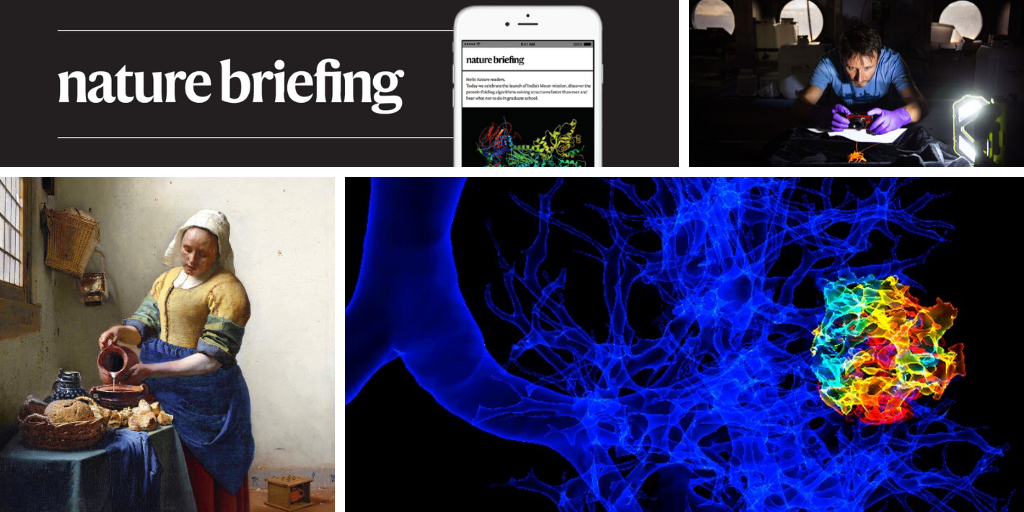Hello Nature readers, would you like to get this Briefing in your inbox free every day? Sign up here
A blue pigment popular with Renaissance artists catalyses a chemical reaction that dulls the intensity of paint colours. ‘Ultramarine sickness’ has long been known to affect paints that include this pigment, but researchers now say that the pigment itself could speed up the oxidation of the oil component of the paint. “If you look at the structure of ultramarine it makes complete sense it has catalytic activity, as it is a zeolite and analogous to commercial catalysts,” says chemist Katrien Keune. Until the early 1800s, ultramarine was made from lapis lazuli found in the mines of Afghanistan, which was pricier than gold. A synthetic version seems to have less catalytic activity.
Source: Journal of Cultural Heritage paper
The physics of black holes has led to the discovery of a basic link between entropy and energy. The idea began when theoreticians spotted a paradox about Hawking radiation, Stephen Hawking’s calculation that black holes must lose mass over an extremely long time. But if a black hole is even slightly electrically charged, after shrinking for eons it will get to a point at which its electric charge is extremely concentrated — which should prevent it from shrinking further, and perhaps even lead it to split into two smaller black holes. While studying this problem, theoretical physicists stumbled on a formula linking any object’s energy to its entropy — a measure of the number of ways an object’s parts can be rearranged without changing its state. Co-author Garrett Goon says that with the latest calculations, black holes give us hints about the nature of quantum gravity. “But maybe even more interesting, you’re learning something about more everyday stuff.”
Source: Physical Review Letters paper
Features & opinion
The first long-term study of how lung cancer evolves is revealing that therapies targeting multiple proteins in tumour cells could help to outpace the disease. Charles Swanton is the chief investigator of TRACERx, a study that is tracking 840 people from the moment of diagnosis. He explains how the project’s findings can help clinicians stay one step ahead of cancer.
Policymakers are having to combine insights from various disciplines at a time when they are massively overstretched and under pressure, writes economist Diane Coyle. To answer the many thorny questions about how to respond to COVID-19, we need collaboration across many disciplines to bring together new findings with old — and fast. “This challenge, like other global challenges looming, is the moment for the research community to prioritize synthesizing knowledge,” argues Coyle.
Andrew Robinson’s pick of the top five science books to read this week includes rehabilitating the Vandals, the bearded ladies of geology and how to get a job in academia.
After decades of research, scientists have managed to separate hydrogen from water with near perfect efficiency using a light-activated catalyst. Chemist Kazunari Domen and his colleagues fine-tuned the prototype system so that almost no energy from the absorbed photons is wasted — throwing open the door to producing clean, green hydrogen fuel from renewable solar energy. “I myself was actually surprised,” laughs Domen in the Nature Podcast.
Nature Podcast | 20 min listen
Go deeper with an analysis by materials scientist Simone Pokrant in the Nature News & Views article.
Reference: Nature paper
Subscribe to the Nature Podcast on iTunes, Google Podcasts or Spotify.
Where I work
“When you’re collecting sea-floor creatures in the abyss off the coast of Western Australia, just about every find is worth a closer look,” says zoologist Andrew Hosie. Hosie shares some of the unexpected encounters from his last trip before it was cut short by the coronavirus. “This beautiful crustacean is a squat lobster — most likely Galacantha rostrata is my best guess,” says Hosie. (Nature | 2 min read)



